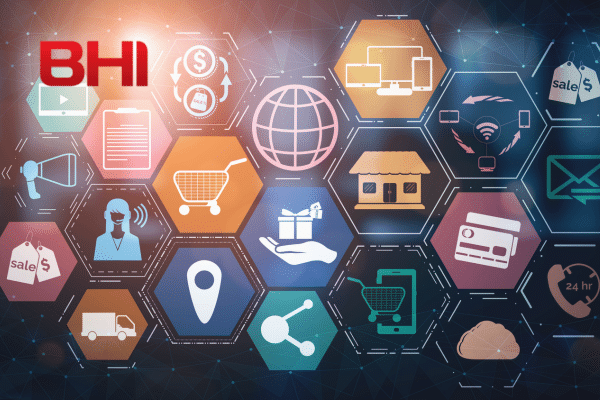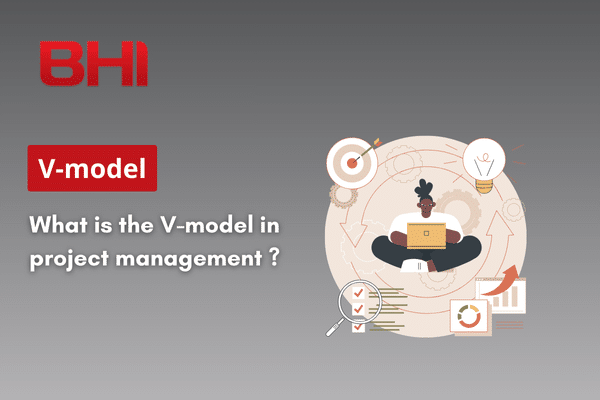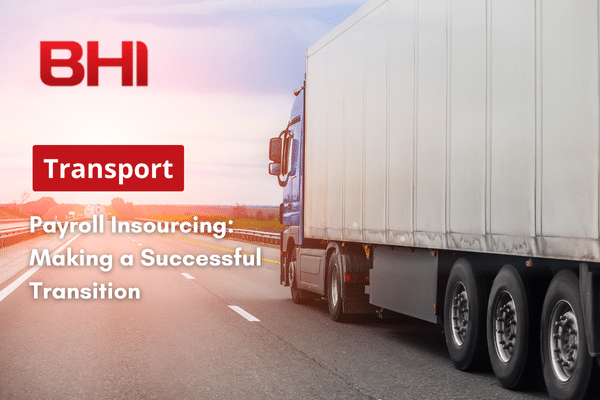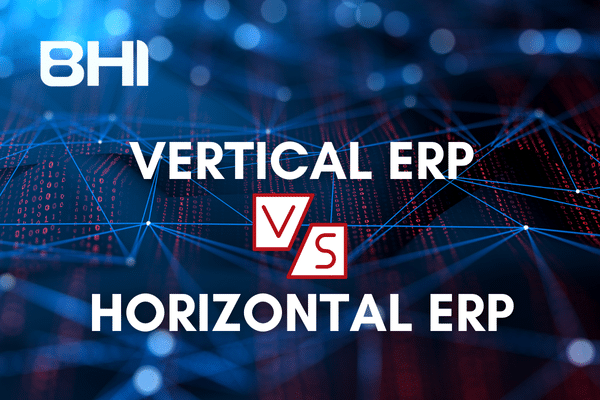The retail sector is undergoing a profound transformation. According to a 2024 McKinsey study, 78% of European retailers consider digital transformation their absolute priority. Faced with increasingly demanding and connected consumers, distributors must rethink their operations from the ground up. It is in this context that ERP (Enterprise Resource Planning) solutions become the central pillar of retail modernization.
What is a Retail ERP ?
An ERP (Enterprise Resource Planning) dedicated to retail is much more than a simple management tool: it’s a platform that centralizes and orchestrates all of a distributor’s operations — inventory, sales, purchasing, finance, human resources, and customer relations. With consumers becoming increasingly connected and demanding, capable of alternating between multiple purchase channels during a single journey — 73% of customers adopt a truly omnichannel approach — the ability to unify the experience across all touchpoints has become essential. The ERP then becomes the “digital core” of this transformation.
The Limits of Traditional Retail
Fragmented Systems
The majority of retailers still operate with disparate systems: one software for point of sale, another for inventory, a third for accounting, not to mention the omnipresent Excel files. This fragmentation creates critical problems:
- Inconsistent data: 43% of retailers admit to having significant discrepancies between their theoretical and actual inventory
- Time loss: Teams spend an average of 15 hours per week manually consolidating data
- Costly errors: Double entries generate an average of 8% errors, directly impacting margins
Omnichannel Inability
Consumers expect consistent information and service wherever they are (pricing, availability, history, after-sales service), which only integrated systems can properly provide:
- Real-time product availability across all channels
- Consistent online and offline pricing
- Unified purchase history
- Informed customer service regardless of touchpoint
Without a modern ERP, many retailers struggle to offer a smooth omnichannel experience and lose potential sales.
Lack of Responsiveness
In a context of ultra-fast trends, retailers need to decide and act quickly, which aging systems don’t allow:
- 54% of retailers discover stock-outs when it’s too late
- The average time to identify an underperforming product is 45 days
- Pricing decisions are based on intuition rather than data in 38% of cases
Margin Pressure
Increased competition, rising logistics costs and return rates, as well as rising labor costs are squeezing the already thin margins of the sector:
- Logistics costs up 15% since 2022
- Competitive pressure on prices
- Increased returns (up to 30% in e-commerce)
- Growing labor costs
Without systemic optimization, retail net margins stagnate around 2-3%, leaving little room to invest and innovate.
When to Migrate to a Modern ERP ?
Warning Signals
Certain indicators should trigger immediate reflection on your information system:
Blocked Growth
- You refuse business opportunities due to lack of system capacity
- Opening a new sales channel takes more than 6 months
- Your current system limits your geographic expansion
Degraded Performance
- Monthly closing takes more than 5 days
- Sales reports arrive 48 hours late
- Customer complaints increase by more than 20% per year
Exploding IT Costs
- Maintenance costs exceed 25% of the IT budget
- You pay for recurring custom developments
- System integrations consume 40% of IT time
Business Risks
- Inability to comply with new regulations
- Dependence on unsupported obsolete systems
- Recurring security incidents or data losses
Key Moments
Merger or Acquisition
This is the ideal opportunity to unify systems and create synergies. 82% of successful mergers include ERP harmonization within the first 18 months.
Business Model Change
Moving to e-commerce, launching a subscription model, internationalization: these transformations require a solid system foundation.
Technology Renewal
If your current ERP is over 10 years old or no longer supported by the vendor, migration becomes urgent to avoid security and obsolescence risks.
The Cost of Inaction
The cost of inaction materializes through market share losses, operational overhead, and increased risk of business crisis.
Benefits of a Modern ERP
Unified Real-Time Vision
One of the main advantages of a Retail ERP is data centralization. Gone are the days when store managers had to wait days to know their performance. With a modern ERP, every transaction, every inventory movement, every customer interaction is instantly visible and analyzable. This transparency enables unprecedented responsiveness: real-time price adjustments, anticipated replenishment, immediate identification of fast-moving products.
Inventory Optimization
Inventory management represents on average 25% of tied-up capital in retail (INSEE, 2023). A high-performing ERP drastically reduces this by optimizing stock levels. Thanks to predictive algorithms, stock-outs decrease by 45% on average, while overstock is reduced by 30%. The impact on cash flow is immediate and significant.
Omnichannel Customer Experience
The modern customer journey is complex: online research, in-store testing, mobile purchase, pickup point collection… A Retail ERP unifies these touchpoints by offering a 360° view of the customer. Store staff access complete purchase history, inventory from all points of sale is visible online, and promotions apply uniformly across all channels. Result: an average 27% increase in basket size (Boston Consulting Group, 2024).
Operational Efficiency
Automation of repetitive processes frees up time for value-added tasks. Automatic invoicing, simplified returns management, automatically generated reports… A well-configured ERP allows teams to focus on customer service and business development. Productivity gains regularly reach 30-40%.
Implementation Challenges
Initial Investment
Let’s be transparent: an ERP represents a significant investment. Between licenses, implementation, and training, the budget can quickly reach several hundred thousand euros for a medium-sized company. However, with an average ROI of 18 months in retail, this investment quickly proves profitable.
Resistance to Change
The human factor remains the main challenge. 60% of ERP projects encounter difficulties related to team resistance (Panorama Consulting, 2024). The key to success lies in change management: continuous training, user involvement from the project start, transparent communication about expected benefits.
Technical Complexity
An ERP touches all aspects of the company. This transversality, a source of value, also represents complexity to manage. Choosing the right implementation partner becomes crucial to navigate this complexity and ensure project success.
How an ERP Solves These Limitations
Data Unification
A modern ERP like Oracle E-Business Suite radically transforms IT architecture:
- Single database: No more manual reconciliations, one source of truth
- Integrated processes: From supplier order to customer sale, everything is connected
- Real-time: Decisions are based on up-to-the-second data
Predictive Capabilities
With advanced ERP analytics capabilities:
- Smart alerts: Notification before stock-out, not after
- Reliable forecasts: Trend anticipation with 85% accuracy
- Automatic optimization: Dynamic price and inventory adjustment
Resource Liberation
ERP frees resources for innovation:
- 70% reduction in time spent on administrative tasks
- 25% margin improvement through optimization
- Expansion capability without proportional cost increase
Oracle E-Business Suite for Retail
Oracle E-Business Suite offers functional coverage specific to the retail sector: multi-site inventory management, dynamic pricing, physical and digital point-of-sale integration, advanced analytics, and regulatory compliance are at the heart of its value proposition. Our approach favors customization through understanding customer challenges and change management.
Key Features
Oracle E-Business Suite offers modules specifically designed for retail challenges:
- Advanced multi-site inventory management with real-time visibility
- Dynamic pricing allowing instant adjustments
- Native integration with e-commerce solutions and points of sale
- Embedded analytics for data-driven decisions
- Integrated regulatory compliance for all markets
The BHI Consulting Approach
What distinguishes a successful implementation from a failure is partner expertise. We bring a unique approach based on:
- Pain point identification: Rather than imposing a rigid model, we go through an audit phase to understand your specific challenges
- Change management: Beyond technical aspects, we ensure knowledge transfer to guarantee team autonomy
Planning Your Migration
Phase 1: Audit (2-3 months)
- Evaluation of existing systems and gap identification
- Definition of business objectives and KPIs
- Business case construction and ROI forecast
- Implementation partner selection
Phase 2: Configuration (3-4 months)
- Target process definition workshops
- System configuration according to best practices
- Minimal custom developments
- Data migration strategy
Phase 3: Deployment (4-6 months)
- Pilot on limited scope
- Key user training
- Phased go-live
- Intensive change management
Phase 4: Optimization (ongoing)
- Performance monitoring
- Adjustments based on field feedback
- New feature activation
- Continuous team training
Concrete Cases Studies
- Textile Distribution
52% reduction in stock-outs in 12 months thanks to better visibility and inventory mobility.
- Food Wholesaler
80% automation of the order cycle and connectivity with 500 professional clients.
Future Trends
AI is already integrated into leading platforms like Oracle, with demand forecasting, automatic price optimization, fraud detection, and product recommendation features — without requiring major system changes.
The retail transformation requires adopting a modern ERP platform to federate operations, gain responsiveness, and offer the omnichannel expected by customers. Oracle E-Business Suite, backed by solid sector expertise, represents a reference option, provided the transformation is managed with rigor and real human support.
Conclusion
In a context where the very survival of traditional retail is questioned, ERP becomes the indispensable catalyst for transformation. Current retail limitations – system fragmentation, lack of responsiveness, margin pressure – are not inevitable.
The signals are clear: if your growth is blocked, your IT costs are exploding, or your customers complain about channel inconsistency, it’s time to act. Each month of delay represents missed opportunities and lost market share.
Oracle E-Business Suite, with its complete functional coverage and innovation capabilities, offers retailers the tools not only to survive but to thrive in this new era. Success lies not only in the technology but in the ability to align this technology with your business strategy. This is where the expertise of a partner like BHI Consulting makes all the difference, transforming a technical project into a true growth lever.
Ready to Transform Your Retail ?
Contact our BHI Consulting experts at +33 (0)1 83 62 12 23 or via the contact form to discuss your ERP challenges and discover how we can support you in your digital transformation.

















